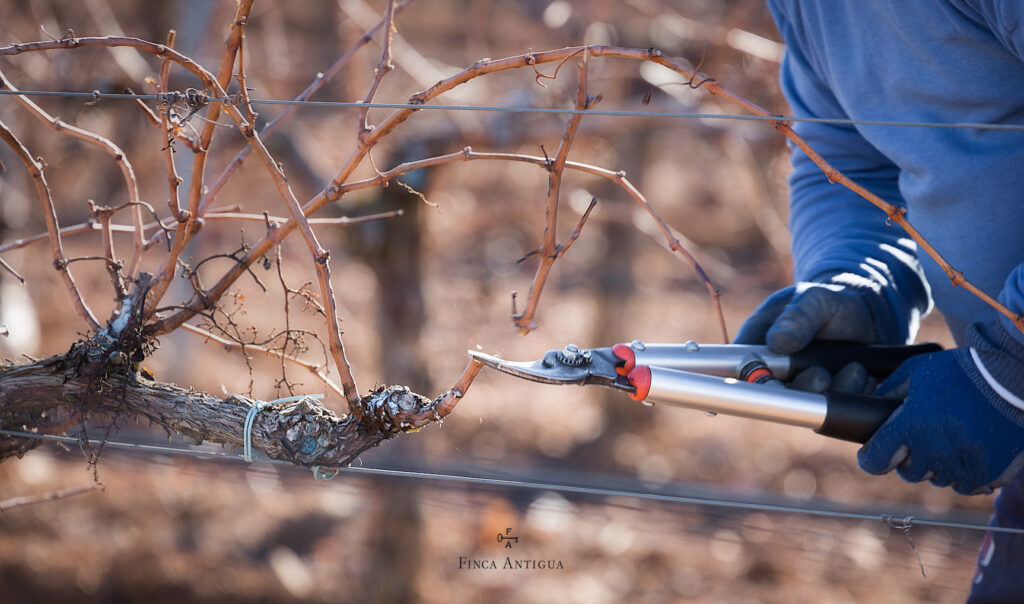Pruning is one of the most important viticultural tasks of the cycle. The pruning season begins after the first frosts, with the loss of leaves and the onset of winter dormancy, and can extend until mid-March, that is, before the plant awakens and renews its life cycle.
Historically, it has been one of the most important tasks of winegrowersAlthough there is evidence of this technique since ancient times when, probably due to the appetite of domestic animals, Greeks, Romans and Arabs found that, after eating the thinner parts of the vine shoots, the following harvest would yield larger bunches and berries.
Pruning will allow us to orient, regulate and balance the plant vegetatively. That is to say, the first consequence is that with pruning we can direct the plant towards a high production or towards a control of yields, which is what we do at Familia Martínez Bujanda wineries. Wines with character from the environment can only be obtained with balanced plants, with sufficient vegetation to withstand adverse conditions of drought, for example, but without being excessive so as not to ‘consume’ the sap and nutrients that the clusters and berries will need.
It is a delicate operation, since it is an ‘amputation’, cutting organs from the plant, so care must be taken to allow the wounds to heal and to disinfect them with the appropriate products. In this sense, we like to prune with the first cold of winter, at this time the shoots will be dry and the cuts will be clean, so the wood will be well ‘cured’ when it recovers the active cycle. As a general rule, it is advisable to avoid foggy or very humid days for these tasks in order to promote healing.
We can distinguish several types of pruning: training pruning, to form the plant according to the training system; production pruning (the pruning we do every winter to balance the plant); rejuvenation pruning, which consists of cutting dry branches due to the age of the vine or diseases for new substitute shoots; and exceptional pruning, when we act due to forced circumstances in vineyards that have suffered frost or hail damage, for example.
As a general rule, on weak vines and shoots, we will leave short stalks with few buds so that the plants produce little and reconstitute themselves, while on strong vines and shoots we will do the opposite to control their vigor.
We have had a strange autumn and winter, one of the warmest on record, also with limited water and we will see if this February the real winter cold returns or if the weather continues to be as mild as the one we are currently experiencing and we have an early bud break. For the moment, the work of the winter, pruning, is done and we will see when and how the plants wake up from their lethargy.




